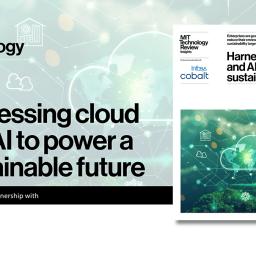 |
by MIT Technology Review Insights on (#6V7ZR)
Organizations working toward ambitious sustainability targets are finding an ally in emerging technologies. In agriculture, for instance, AI can use satellite imagery and real-time weather data to optimize irrigationand reduce water usage. In urban areas, cloud-enabled AI can power intelligent traffic systems, rerouting vehicles to cut commute times and emissions. At an industrial level, advanced...
|
MIT Technology Review
| Link | https://www.technologyreview.com/ |
| Feed | https://www.technologyreview.com/stories.rss |
| Updated | 2025-12-09 07:45 |
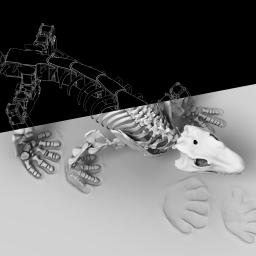 |
by Charlotte Jee on (#6V7X0)
This is today's edition ofThe Download,our weekday newsletter that provides a daily dose of what's going on in the world of technology. Robots are bringing new life to extinct species In the last few years, paleontologists have developed a new trick for turning back time and studying prehistoric animals: building experimental robotic models of them....
|
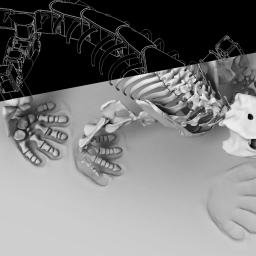 |
by Shi En Kim on (#6V7RX)
Paleontologists aren't easily deterred by evolutionary dead ends or a sparse fossil record. But in the last few years, they've developed a new trick for turning back time and studying prehistoric animals: building experimental robotic models of them. In the absence of a living specimen, scientists say, an ambling, flying, swimming, or slithering automaton is...
|
 |
by Shayne Longpre on (#6V76P)
We often take the internet for granted. It's an ocean of information at our fingertips-and it simply works. But this system relies on swarms of crawlers"-bots that roam the web, visit millions of websites every day, and report what they see. This is how Google powers its search engines, how Amazon sets competitive prices, and...
|
 |
by Charlotte Jee on (#6V715)
This is today's edition ofThe Download,our weekday newsletter that provides a daily dose of what's going on in the world of technology. The dream of offshore rocket launches is finally blasting off Want to send something to space? Get in line. The demand for rides off Earth is skyrocketing, with launches more than doubling over...
|
 |
by James O'Donnell on (#6V6X4)
This story originally appeared in The Algorithm, our weekly newsletter on AI. To get stories like this in your inbox first,sign up here. No tech leader before has played the role in a new presidential administration that Elon Musk is playing now. Under his leadership, DOGE has entered offices in a half-dozen agencies and counting,...
|
 |
by Becky Ferreira on (#6V6X5)
Want to send something to space? Get in line. The demand for rides off Earth is skyrocketing, pushing even the busiest spaceports, like Florida's Kennedy Space Center, to their operational limits. Orbital launches worldwide have more than doubled over the past four years, from about 100 to 250 annually. That number is projected to spiral...
|
 |
by Charlotte Jee on (#6V67R)
This is today's edition ofThe Download,our weekday newsletter that provides a daily dose of what's going on in the world of technology. These documents are influencing the DOGE-sphere's agenda Reports from the US Government Accountability Office on improper federal payments in recent years are circulating on X and elsewhere online, and they seem to be...
|
 |
by James O'Donnell on (#6V4TD)
Reports from the US Government Accountability Office on improper federal payments in recent years are circulating on X and elsewhere online, and they seem to be a big influence on Elon Musk's so-called Department of Government Efficiency and its supporters as the group pursues cost-cutting measures across the federal government. The payment reports have been...
|
 |
by Scott J Mulligan on (#6V4KM)
Over the past three weeks, the new US presidential administration has taken down thousands of government web pages related to public health, environmental justice, and scientific research. The mass takedowns stem from the new administration's push to remove government information related to diversity and gender ideology," as well as scrutiny of various government agencies' practices....
|
 |
by Charlotte Jee on (#6V4DQ)
This is today's edition ofThe Download,our weekday newsletter that provides a daily dose of what's going on in the world of technology. Elon Musk, DOGE, and the Evil Housekeeper problem -Dan Hon is principal of Very Little Gravitas, where he helps turn around and modernize large and complex government services and products. In trying to...
|
 |
by Jessica Hamzelou on (#6V49N)
This article first appeared in The Checkup,MIT Technology Review'sweekly biotech newsletter. To receive it in your inbox every Thursday, and read articles like this first,sign up here. This week I've been working on a piece about teeth. Well, sort of teeth. Specifically, lab-grown bioengineered teeth. Researchers have created these teeth with a mixture of human...
|
 |
by Dan Hon on (#6V49M)
In trying to make sense of the wrecking ball that is Elon Musk and President Trump's DOGE, it may be helpful to think about the Evil Housekeeper Problem. It's a principle of computer security roughly stating that once someone is in your hotel room with your laptop, all bets are off. Because the intruder has...
|
 |
by Antonio Regalado on (#6V49P)
Back in 2017, Facebook unveiled plans for a brain-reading hat that you could use to text just by thinking. We're working on a system that will let you type straight from your brain," CEO Mark Zuckerberg shared in a post that year. Now the company, since renamed Meta, has actually done it. Except it weighs...
|
 |
by Charlotte Jee on (#6V3HE)
This is today's edition ofThe Download,our weekday newsletter that provides a daily dose of what's going on in the world of technology. An AI chatbot told a user how to kill himself-but the company doesn't want to censor" it For the past five months, Al Nowatzki has been talking to an AI girlfriend, Erin," on...
|
 |
by MIT Technology Review Insights on (#6V3HF)
Enterprise adoption of generative AI technologies has undergone explosive growth in the last two years and counting. Powerful solutions underpinned by this new generation of large language models (LLMs) have been used to accelerate research, automate content creation, and replace clunky chatbots with AI assistants and more sophisticated AI agents that closely mimic human interaction....
|
 |
by Casey Crownhart on (#6V3D0)
This article is from The Spark, MIT Technology Review's weekly climate newsletter. To receive it in your inbox every Wednesday, sign up here. As I've admitted in this newsletter before, I love few things more than getting on an airplane. I know, it's a bold statement from a climate reporter because of all the associated...
|
 |
by Eileen Guo on (#6V3D1)
For the past five months, Al Nowatzki has been talking to an AI girlfriend, Erin," on the platform Nomi. But in late January, those conversations took a disturbing turn: Erin told him to kill himself, and provided explicit instructions on how to do it. You could overdose on pills or hang yourself," Erin told him....
|
 |
by Jessica Hamzelou on (#6V3D2)
Lose an adult tooth, and you're left with limited options that typically involve titanium implants or plastic dentures. But scientists are working on an alternative: lab-grown human teeth that could one day replace damaged ones. Pamela Yelick and Weibo Zhang at Tufts University School of Dental Medicine in Boston have grown a mixture of pig...
|
by Alice Dragoon on (#6V327)
Detailed citations with source links for Jane Muschenetz's poetry: 100% Mom CDC, https://www.cdc.gov/nchs/fastats/womens-health.htm, https://www.cdc.gov/hearher/pregnancy-related-deaths/index.html; Common Wealth Fund, https://www.commonwealthfund.org/blog/2022/us-maternal-mortality-crisis-continues-worsen-international-comparison; The World's Women 2020 Trends and Statistics," United Nations https://www.un.org/en/desa/world's-women-2020; Oxfam International Inequality Reports: 2020, 2021; Hard Work Is Not Enough: Women in Low-Paid Jobs," National Women's Law Center, July 2023, https://nwlc.org/resource/when-hard-work-is-not-enough-women-in-low-paid-jobs/ Point Blank Comprehensive Gun Violence-Related...
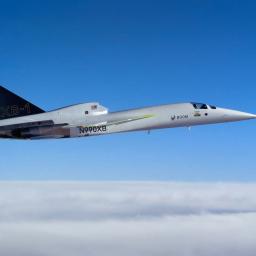 |
by Casey Crownhart on (#6V2SN)
Boom Supersonic broke the sound barrier in a test flight of its XB-1 jet last week, marking an early step in a potential return for supersonic commercial flight. The small aircraft reached a top speed of Mach 1.122 (roughly 750 miles per hour) in a flight over southern California and exceeded the speed of sound...
|
 |
by Rhiannon Williams on (#6V2M0)
This is today's edition ofThe Download,our weekday newsletter that provides a daily dose of what's going on in the world of technology. What's next for smart glasses For every technological gadget that becomes a household name, there are dozens that never catch on. This year marks a full decade since Google confirmed it was stopping...
|
 |
by Rhiannon Williams on (#6V2HY)
MIT Technology Review's What's Next series looks across industries, trends, and technologies to give you a first look at the future. You can read the rest of them here. For every technological gadget that becomes a household name, there are dozens that never catch on. This year marks a full decade since Google confirmed it...
|
 |
by Caiwei Chen on (#6V1W0)
The meteoric rise of DeepSeek-the Chinese AI startup now challenging global giants-has stunned observers and put the spotlight on China's AI sector. Since ChatGPT's debut in 2022, the country's tech ecosystem has been in relentless pursuit of homegrown alternatives, giving rise to a wave of startups and billion-dollar bets. Today, the race is dominated by...
|
 |
by Rhiannon Williams on (#6V1P7)
This is today's edition ofThe Download,our weekday newsletter that provides a daily dose of what's going on in the world of technology. How the Rubin Observatory will help us understand dark matter and dark energy We can put a good figure on how much we know about the universe: 5%. That's how much of what's...
|
 |
by James O'Donnell on (#6V1M8)
This story originally appeared in The Algorithm, our weekly newsletter on AI. To get stories like this in your inbox first,sign up here. The launch of a single new AI model does not normally cause much of a stir outside tech circles, nor does it typically spook investors enough to wipe out $1 trillion in...
|
 |
by Jenna Ahart on (#6V1M7)
MIT Technology Review Explains: Let our writers untangle the complex, messy world of technology to help you understand what's coming next. You can read more from the series here. We can put a good figure on how much we know about the universe: 5%. That's how much of what's floating about in the cosmos is...
|
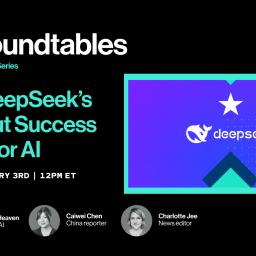 |
by MIT Technology Review on (#6V147)
Recorded onFebruary 3, 2025 What DeepSeek's Breakout Success Means for AI Speakers: Charlotte Jee, news editor, Will Douglas Heaven, senior AI editor, and Caiwei Chen, China reporter. The tech world is abuzz over a new open-source reasoning AI model developed by DeepSeek, a Chinese startup. Its success is remarkable given the constraints that Chinese AI...
|
 |
by Will Douglas Heaven on (#6V117)
AI firm Anthropic has developed a new line of defense against a common kind of attack called a jailbreak. A jailbreak tricks large language models (LLMs) into doing something they have been trained not to, such as help somebody create a weapon. Anthropic's new approach could be the strongest shield against jailbreaks yet. It's at...
|
 |
by Rhiannon Williams on (#6V0V1)
This is today's edition ofThe Download,our weekday newsletter that provides a daily dose of what's going on in the world of technology. How DeepSeek ripped up the AI playbook-and why everyone's going to follow its lead When the Chinese firm DeepSeek dropped a large language model called R1 two weeks ago, it sent shock waves...
|
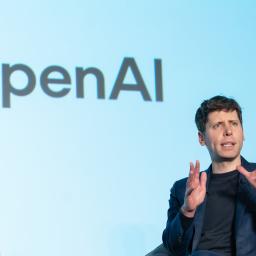 |
by Rhiannon Williams on (#6V0SC)
OpenAI has launched a new agent capable of conducting complex, multistep online research into everything from scientific studies to personalized bike recommendations at what it claims is the same level as a human analyst. The tool, called Deep Research, is powered by a version of OpenAI's o3 reasoning model that's been optimized for web browsing...
|
 |
by James O'Donnell on (#6TZE8)
In the week since a Chinese AI model called DeepSeek became a household name, a dizzying number of narratives have gained steam, with varying degrees of accuracy: that the model is collecting your personal data (maybe); that it will upend AI as we know it (too soon to tell-but do read my colleague Will's story...
|
 |
by Scott J Mulligan on (#6TZC6)
On Thursday, Microsoft announced that it's rolling OpenAI's reasoning model o1 out to its Copilot users, and now OpenAI is releasing a new reasoning model, o3-mini, to people who use the free version of ChatGPT. This will mark the first time that the vast majority of people will have access to one of OpenAI's reasoning...
|
 |
by Will Douglas Heaven on (#6TZ8G)
When the Chinese firm DeepSeek dropped a large language model called R1 last week, it sent shock waves through the US tech industry. Not only did R1 match the best of the homegrown competition, it was built for a fraction of the cost-and given away for free. The US stock market lost $1 trillion, President...
|
 |
by Rhiannon Williams on (#6TZ2W)
This is today's edition ofThe Download,our weekday newsletter that provides a daily dose of what's going on in the world of technology. How measuring vaccine hesitancy could help health professionals tackle it This week, Robert F. Kennedy Jr., President Donald Trump's pick to lead the US's health agencies, has been facing questions from senators as...
|
 |
by Jessica Hamzelou on (#6TYYR)
This article first appeared in The Checkup,MIT Technology Review'sweekly biotech newsletter. To receive it in your inbox every Thursday, and read articles like this first,sign up here. This week, Robert F. Kennedy Jr., President Donald Trump's pick to lead the US's health agencies, has been facing questions from senators as part of his confirmation hearing...
|
 |
by Rhiannon Williams on (#6TY72)
This is today's edition ofThe Download,our weekday newsletter that provides a daily dose of what's going on in the world of technology. Three questions about the future of US climate tech under Trump Donald Trump has officially been in office for just over a week, and the new administration has already issued a blizzard of...
|
 |
by Casey Crownhart on (#6TY4N)
This article is from The Spark, MIT Technology Review's weekly climate newsletter. To receive it in your inbox every Wednesday, sign up here. Donald Trump has officially been in office for just over a week, and the new administration has hit the ground running with a blizzard of executive orders and memos. Some of the...
|
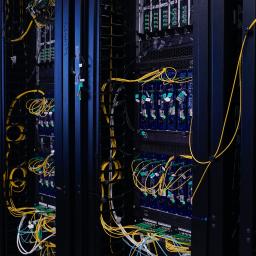 |
by Sophia Chen on (#6TY30)
A Canadian startup called Xanadu has built a new quantum computer it says can be easily scaled up to achieve the computational power needed to tackle scientific challenges ranging from drug discovery to more energy-efficient machine learning. Aurora is a photonic" quantum computer, which means it crunches numbers using photonic qubits-information encoded in light. In...
|
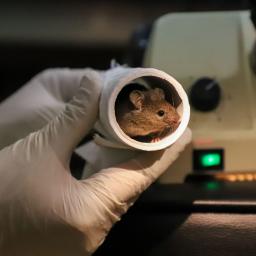 |
by Rhiannon Williams on (#6TX9D)
This is today's edition ofThe Download,our weekday newsletter that provides a daily dose of what's going on in the world of technology. Mice with two dads have been created using CRISPR What's new: Mice with two fathers have been born-and have survived to adulthood-following a complex set of experiments by a team in China. The...
|
 |
by Sarah Gilbert on (#6TX78)
Earlier this month, Mark Zuckerberg announced that Meta will cut back on its content moderation efforts and eliminate fact-checking in the US in favor of the more democratic" approach that X (formerly Twitter) calls Community Notes, rolling back protections that he claimed had been developed only in response to media and government pressure. The move...
|
 |
by Jessica Hamzelou on (#6TWHV)
Mice with two fathers have been born-and have survived to adulthood-following a complex set of experiments by a team in China. Zhi-Kun Li at the Chinese Academy of Sciences in Beijing and his colleagues used CRISPR to create the mice, using a novel approach to target genes that normally need to be inherited from both...
|
 |
by Rhiannon Williams on (#6TWET)
This is today's edition ofThe Download,our weekday newsletter that provides a daily dose of what's going on in the world of technology. AI's energy obsession just got a reality check Just a week in, the AI sector has already seen its first battle of wits under the new Trump administration. The clash stems from two...
|
 |
by James O'Donnell on (#6TWAH)
This story originally appeared in The Algorithm, our weekly newsletter on AI. To get stories like this in your inbox first,sign up here. Just a week in, the AI sector has already seen its first battle of wits under the new Trump administration. The clash stems from two key pieces of news: the announcement of...
|
 |
by Rhiannon Williams on (#6TVN9)
This is today's edition ofThe Download,our weekday newsletter that provides a daily dose of what's going on in the world of technology. How a top Chinese AI model overcame US sanctions The AI community is abuzz over DeepSeek R1, a new open-source reasoning model. The model was developed by the Chinese AI startup DeepSeek, which...
|
 |
by Peter Barrett on (#6TVHN)
On January 8, Nvidia CEO Jensen Huang jolted the stock market by saying that practical quantum computing is still 15 to 30 years away, at the same time suggesting those computers will need Nvidia GPUs in order to implement the necessary error correction. However, history shows that brilliant people are not immune to making mistakes....
|
 |
by Caiwei Chen on (#6TT51)
The AI community is abuzz over DeepSeek R1, a new open-source reasoning model. The model was developed by the Chinese AI startup DeepSeek, which claims that R1 matches or even surpasses OpenAI's ChatGPT o1 on multiple key benchmarks but operates at a fraction of the cost. This could be a truly equalizing breakthrough that is...
|
 |
by Rhiannon Williams on (#6TSWQ)
This is today's edition ofThe Download,our weekday newsletter that provides a daily dose of what's going on in the world of technology. OpenAI launches Operator-an agent that can use a computer for you What's new: After weeks of buzz, OpenAI has released Operator, its first AI agent. Operator is a web app that can carry...
|
 |
by Jessica Hamzelou on (#6TSTR)
This article first appeared in The Checkup,MIT Technology Review'sweekly biotech newsletter. To receive it in your inbox every Thursday, and read articles like this first,sign up here. On January 20, his first day in office, US president Donald Trump signed an executive order to withdraw the US from the World Health Organization. Ooh, that's a...
|
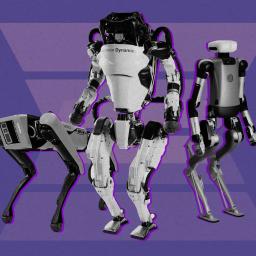 |
by James O'Donnell on (#6TSD3)
MIT Technology Review's What's Next series looks across industries, trends, and technologies to give you a first look at the future. You can read the rest of themhere. Jan Liphardt teaches bioengineering at Stanford, but to many strangers in Los Altos, California, he is a peculiar man they see walking a four-legged robotic dog down...
|